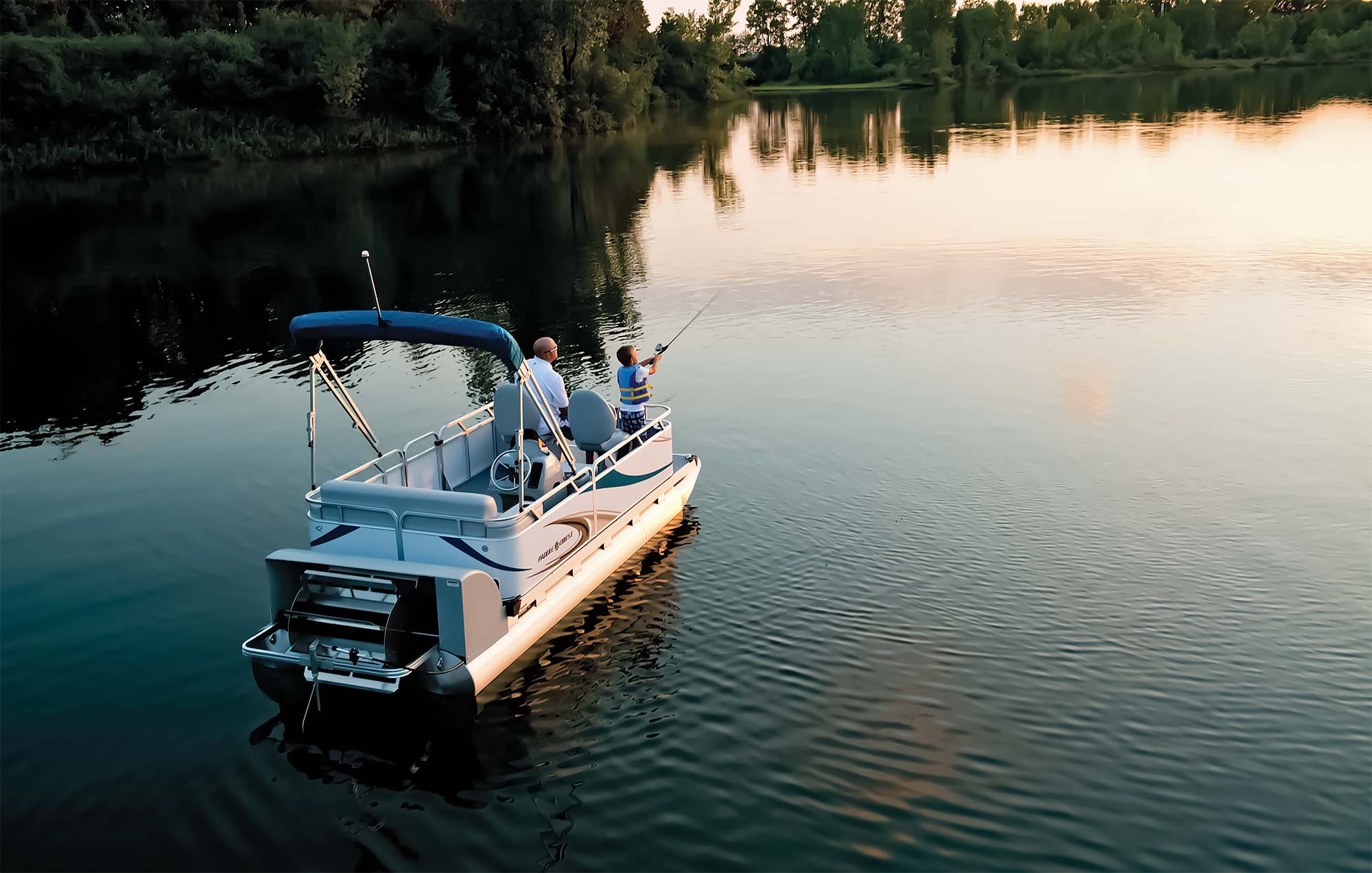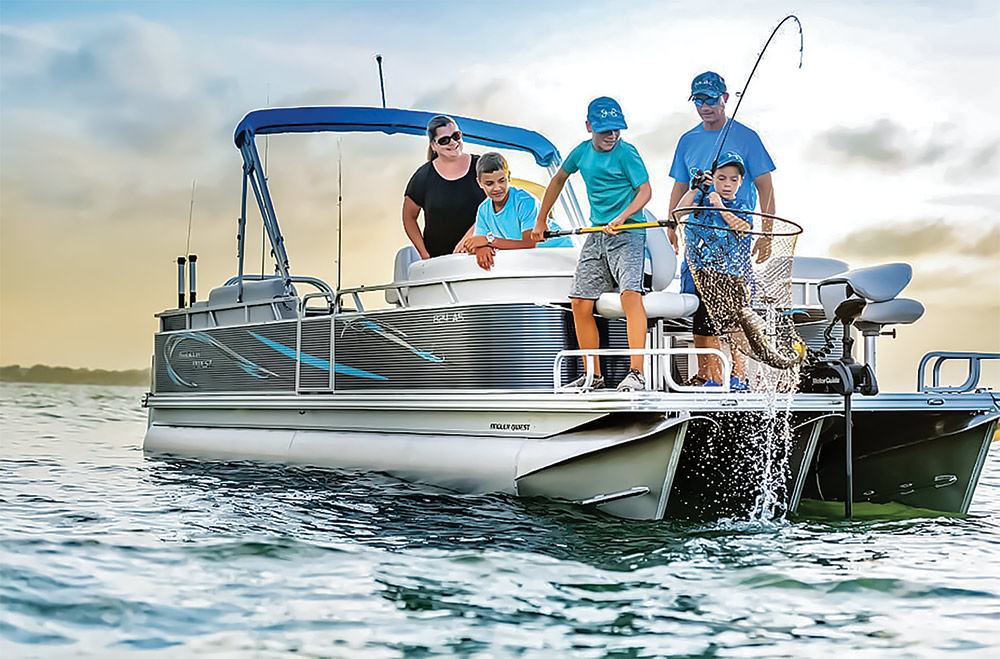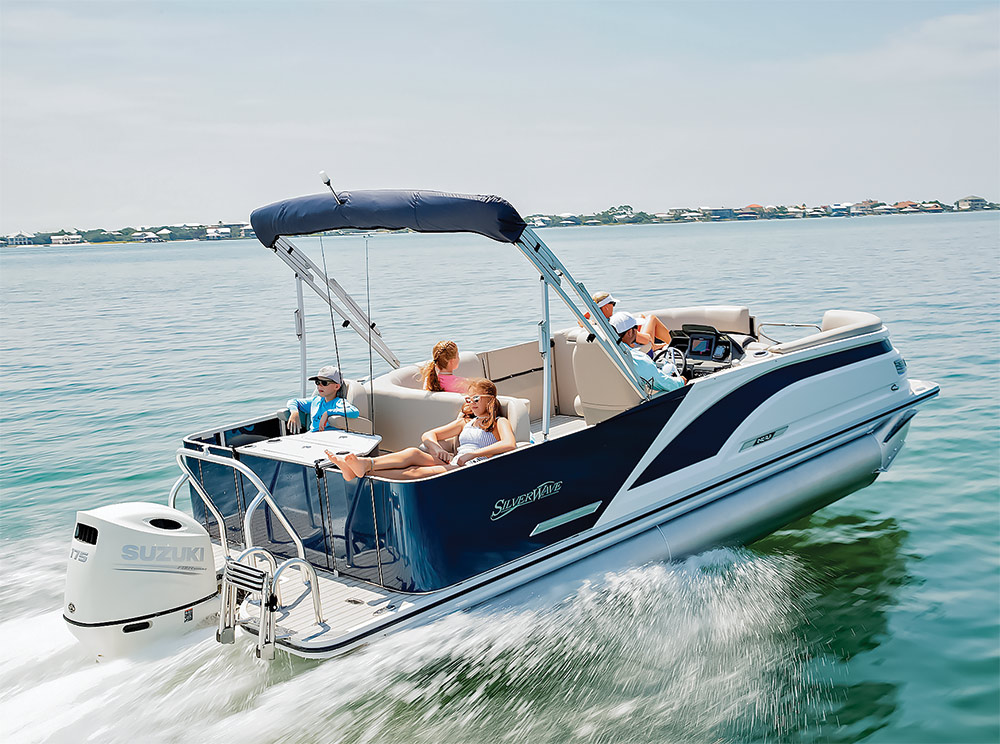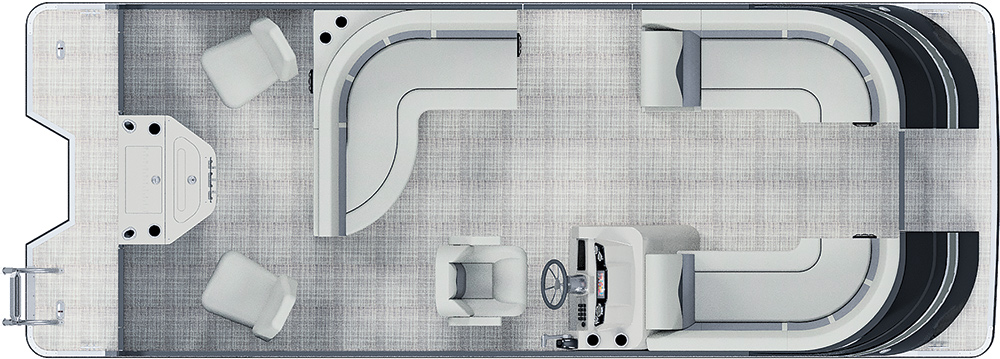By Dan Armitage

By Dan Armitage
inding fish – or the structure or conditions that hold them – is only one part of the catching process. Once fish or productive-looking water is located using sheer luck, past experience, sonar, catching or a combination of all four, it behooves anglers to remain within casting distance of the targeted zone. Even when trolling, many anglers use the on-the-go method to locate fish or structure or conditions such as current breaks or edges where fish might be found feeding. Once they locate an area they think will hold fish, trollers will switch tactics to casting in order to better concentrate their fishing efforts to the “spot on the spot” in hopes of hooking-up.
Keeping the deck or pontoon boat in place over or near a productive fishing spot is relatively easy when there’s no wind or current; otherwise, high profile craft such as pontoon boats especially can be a challenge to keep in place. I argue that pontoon boats seem to be affected by current more than traditional-hulled craft as well, but any boat is subject to the forces of wind and current and should be outfitted with ground tackle – read that anchor and line – suitable to hold it in place in the face of the harshest conditions likely to be faced on the waters in question. And have a backup to boot!
In fact, the ability to properly anchor a boat in an emergency situation is so important that most states require adequate ground tackle be aboard all recreational watercraft. Any boater who has faced a situation when the ability to anchor their craft meant the difference between a momentary distraction and an all-out disaster understands why.
Traditional anchors use a combination of weight and shape to hold the boat to which they are attached in position. The best combination of both features for a particular anchoring situation depends upon the composition of the bottom, be it mud, sand, rock, wood, grass, or gravel.
Most anchors must be “set” to be effective. Setting involves digging the anchor into the bottom to offer its full holding power. Power-setting is recommended with traditional anchors such as the Danforth, although you can sometimes set an anchor manually or by using the current, wind or boat drift to force the anchor into the bottom. To power set, you drop the anchor off the bow until it hits the bottom, making sure it does not foul on the line or rode* as it descends. Once the anchor is on the bottom, you put the boat into slow reverse, carefully paying out the amount of line to reach the proper scope or angle from the boat to the anchor. Snub the line around a cleat or bit at that point and when the line comes taut, the anchor should bite into the bottom. If it holds with the engine in reverse gear just above idle speed, the anchor is set.
The key to setting a Danforth-style anchor – and most other types – is the angle of the upward pressure from the boat. The lower the angle, the more apt the anchor is to dig in, rather than lift off, the bottom. That’s why a long scope or line-length to the anchor is important. The standard scope recommended by most experts is 7:1, a length of anchor line equal to seven times the depth of water being anchored over. If you are attempting to anchor in ten feet of water, for example, you’d need 70 feet of scope leading from your bow cleat to the anchor chain. Several feet of chain are used between the anchor line and the Danforth-style anchor to weigh down the shank to keep its angle low. The chain can also thwart abrasion when anchoring around rocks or other debris that could sever the plain anchor line.
The amount of scope actually needed to keep a boat in place varies greatly with the anchor type, wind and water conditions. In conditions of little wind or current, less scope may be required, but to play it safe, the 7:1 ratio should be adhered to whenever possible when using a fluke- or Danforth-style anchor.

Two anchors are better than one in certain situations, such as when anchoring out for the night. When wind is a concern, you can set out a pair of anchors to increase your odds of staying put. The key to dual-anchor sets is placing each anchor at a different angle off your pontoon boat’s bow, to a maximum of 45 degrees between them. A proper two-anchor set will also reduce yawing and pitching due to wind, waves and current, making for a much more comfortable anchorage.
In protected waters, you can use an anchor off the stern as well as the bow, to keep from swinging in the breeze or to keep it parallel to the shore or structure. Anglers often use bow and stern anchors to keep their boat broadside to the best fishing area, which allows the maximum number of anglers aboard to have easy access to the spot.
When in doubt while anchoring, increase your scope by letting out more line and set a second anchor for added security if you intend to stay in one spot for a period of extended fishing or a night aboard. If your boat has a GPS you can check for anchor slippage or drag by using the function available on most units to detect movement while at anchor and sounding an alarm.
*Anchoring Terms
Weighing Anchor: To lift or retrieve the anchor before getting underway.
Rode: The line and/or chain used to attach the anchor to the boat.
Ground Tackle: The anchor, rode and fittings.
Scope: The ratio of the length of rode to the vertical distance from the bow chocks to the bottom of the water.
Chocks: The fitting on the deck used to securely stow an anchor when it is not in use.
Hawse Pipe or Deckpipe: An opening through the deck or hatch through which the anchor rode can be or retrieved or stowed.
Set: Securing the anchor to the bottom.
Mooring bit: The post or cleat on the boat’s deck used to secure an anchor rode or other line to the boat.
Away With “Away”
The phrase “anchors aweigh” is frequently misspelled (“away”) and misinterpreted (to deploy rather than to retrieve). The “weigh anchor” order from the captain of a vessel tells the crew to retrieve the anchor from the bottom (feeling its weight in the process, hence the term). The crew lets the captain know when the anchor is free of the bottom and on the way in by replying “anchors aweigh!”


Silver Wave Model 2410 SW5 RLP
Silver Wave Pontoons are real head-turners, thanks to a unique shear line made possible by the fiberglass exterior that envelops the boat and facilitates the layout, the profile and the adding of accessories for both angling and comfort alike. The 2410 SW5 model’s helm features standard tilt steering, a Garmin EchoMAP UHD 73sv GPS with engine data interface, two wireless charging stations, a 12-volt receptacle, USB charging port and a removable windscreen. At the transom of the popular 24-footer is an optional fish station with an aerated livewell/baitwell, vertical rod storage racks, angled flush-mount rod holders, tackle tub, cutting board and integrated battery storage. Fishing chairs come standard with the model, while upgraded chairs, underwater fishing lights and a wired mounting plate for a bow-mounted electric trolling motor are offered as well, along with a plethora of other options including color selections and design features that make the Silver Wave a true semi-custom pontoon rig for comfortable cruising and angling – at anchor or underway.